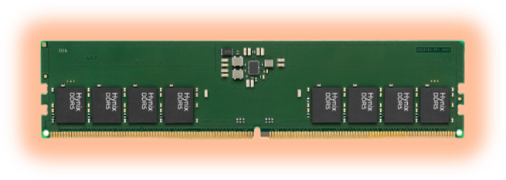Regulatory and Compliance Challenges in Sourcing EOL Components for Long-Life Applications

In 1970, the expected lifespan of a semiconductor was approximately 30 years. By 2014, this lifespan had been shortened to just ten years—a reduction of 60% in less than half a century. Today, the leading-edge applications that set the lifecycle pace and volume are lucky to have a life of short as 3 years. This rapid technological advancement means that strategies for managing component obsolescence must be developed right from the manufacturing stage to prevent potential disruptions for end users. This issue is particularly critical in industries with long-life applications like healthcare, aerospace, defense, and telecommunications. These industries still rely on mature memory technologies like DDR3, DDR4, and eMMC 5.0 and face complex regulatory and compliance challenges when sourcing components that are nearing or at the end of their production life. Such sectors require stable, long-lasting components that adhere to strict safety, quality, and performance standards.
Standards, Rules, and Regulations
One of the main challenges when sourcing end-of-life (EOL) components is navigating an evolving regulatory landscape. In fields like healthcare and aerospace, components, including the embedded memory, must comply with stringent regulations from bodies such as the U.S. Food and Drug Administration (FDA) or the Federal Aviation Administration (FAA). For defense applications, compliance with the International Traffic in Arms Regulations (ITAR) or the Export Administration Regulations (EAR) is essential. These regulations often require all components within a system to be traceable, reliable, and certified for safety. However, when dealing with EOL components, ensuring these standards can be tough, as suppliers may not always provide the same level of compliance assurance as they do for components still in active production. Additionally, manufacturers must remain aware of changing environmental and safety standards, which can render certain components non-compliant and, therefore, obsolete. Companies must be proactive in adapting to these evolving standards to minimize the risk of obsolescence.
To effectively address all of these challenges, companies should focus on collaborating with suppliers with strong quality control measures. This focus reduces the likelihood of counterfeit or substandard components entering the supply chain, which could have severe consequences in critical applications.
A long life
Another significant challenge is the need to maintain certifications and regulatory approvals throughout the lifespan of products, which can extend over several decades in sectors like medical devices and defense. The unavailability of key components can necessitate the recertification of entire systems—a process that is often expensive and time-consuming. Therefore, sourcing EOL components that still meet the original certification standards without requiring substantial modifications to the product is crucial.
One practical approach to managing this issue is to engage in last-time buys (LTB) before components are discontinued. By purchasing sufficient quantities of components ahead of their EOL, companies can reduce the need for redesigns and recertifications. However, this approach can be taxing on cash flow as it locks cash in components that may not be used until months or even years later. Moreover, engaging in LTB must be carefully managed to avoid risks like overstocking, storage issues, or component degradation over time.
Changing global landscape
Global trade regulations and export controls further complicate the sourcing of EOL components. Changes in international trade policies, such as new tariffs or trade restrictions, can disrupt the flow of semiconductor components across borders. Staying informed about geopolitical developments that could impact supply chains is essential. For example, ongoing trade tensions between major economies, such as the U.S. and China, have increased scrutiny on the export and import of semiconductor components, affecting global supply dynamics.
Compliance management strategy
To navigate these regulatory and compliance challenges effectively, companies should develop a comprehensive compliance management strategy. This includes building strong relationships with their suppliers, keeping up-to-date with international regulations, collaborating closely with legal and compliance teams, and utilizing technology to streamline compliance processes. Leveraging advanced compliance tools can automate many tasks, reducing administrative workloads and minimizing the risk of non-compliance.
In addition, companies should prioritize continuous training for their procurement and supply chain teams. As regulatory landscapes change, teams must stay informed about new requirements and understand the implications for maintaining a compliant supply chain. This is especially important in industries where failing to comply with regulations can lead to substantial penalties, loss of certification, and damage to the company’s reputation.
Sourcing EOL components for critical applications involves navigating a complex set of regulatory and compliance challenges. Ensuring compliance with safety and quality standards, maintaining certifications, and staying up-to-date with global trade regulations are all essential steps in managing the risks associated with sourcing mature memory components in highly regulated industries. By partnering with a trusted supplier, like SMARTsemi, and staying informed about regulatory changes, companies can better manage these risks and secure a reliable supply of memory components for long-life applications.
SMARTsemi is your supply chain partner for DRAM components, eMMC solutions, and SD/microSD Flash Memory Cards for long-life applications. With 20+ years of industry experience, we understand your challenges and have aligned our priorities with yours to simplify your memory chip supply chain for the long run. We know what you need before you need it. Get a jump start and request a sample today.







